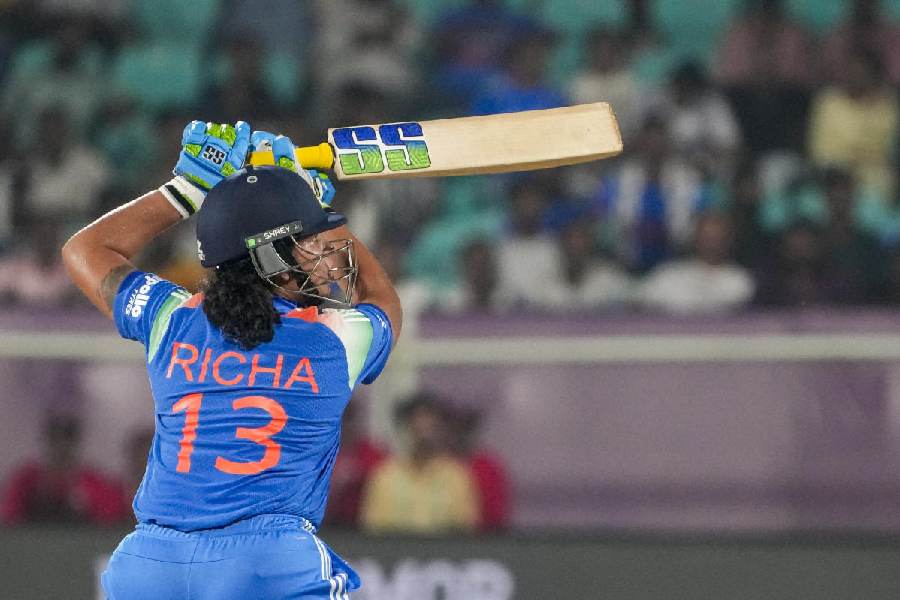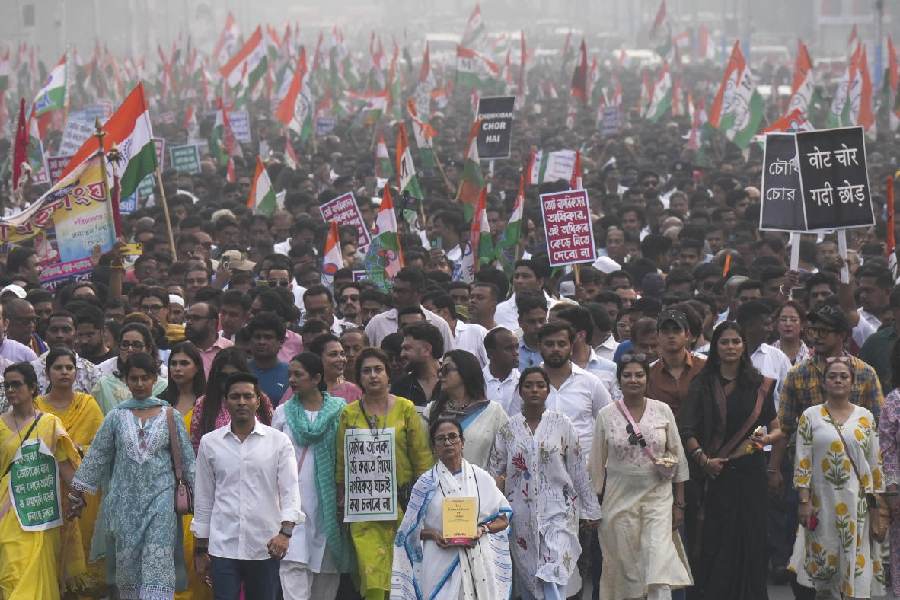 |
A man in a car offers a lift to a girl. Just then, her friend arrives on a scooter. She hops on, and the two ride off, leaving the man looking sick while the voice-over booms: “Why should boys have all the fun?”
Our sentiment, entirely. But punchy tagline apart, what is significant about this TV commercial for Hero Honda’s newly launched 100cc scooter, Pleasure, is that it typifies the winds of change emanating from India’s adland. Advertisers seem to have finally cottoned on to the fact that today’s urban Indian women are decision-makers not just in the case of home appliances and beauty and personal care products. They are an important and burgeoning consumer segment that can also be tapped for such products as automobiles, computers, financial plans, home loans ? in short, products that have traditionally been considered to be the exclusive preserve of men.
Take, for instance, a recent print ad for Horizon, a unit-linked plan from the SBI Life stable. It shows a smiling, no-nonsense looking woman and bears the legend, “Shruti Nayak, Teacher. Financial market guru?” The not-so-subliminal message here is that her transformation from humdrum teacher to finance wiz is to take place with the help of the plan in question. Similarly, an HDFC Home Loans print advertisement has a young woman (fully-clothed, and hence, not present merely as eye candy) balancing herself on a road divider, to illustrate the “balanced” feature of the home loan. Again, sometime back, the TV commercial for Mahindra and Mahindra’s biggie ? the SUV, Scorpio ? showed a woman telling the male driver to move over so she could take the wheel.
Of course, not all these ads speak to women the way Pleasure does, which is a product designed specifically for them. But they do break new ground by depicting women in roles that are a world away from their usual representation as decorative set pieces, grinning and fawning on something or the other. Or, as ecstatic consumers of washing machines, detergents, soups, soaps, fairness creams, anti-ageing potions ? products that are part of the whole apparatus of a woman’s image as wife, mother, ever-young seductress and superhuman multi-tasker. These new ads project a woman as someone who uses her independence constructively, who has the brains and the wherewithal to take her own investment decisions, and who claims her share of “fun” along with the male of the species.
If advertisers today are directing communication for certain traditionally masculine products at women, they are doing so for hard financial reasons. As more and more women move up the professional value chain, it is but natural that marketers will eye their large disposable incomes. In fact, data from market research agency IMRB International’s Target Group Index survey show that among all upmarket urban working women in India, 35 per cent belonging to car-owning households have been involved in the brand decision of the car. Moreover, 31 per cent have their own financial investments, in addition to insurance. The survey also reveals that among women belonging to households that have bought personal computers in the last 12 months, 45 per cent claim to have been involved in the buying decision.
These may not be staggering figures. But advertising professionals agree that there are now enough quantitative and qualitative signals for them to pitch a range of “non-traditional” products at this new breed of economically independent women. As adman Suhel Seth points out, “Many of today’s women have their own income. They are conscious of their womanhood as also of their newfound achievement, thus making it necessary for marketers to salute this new consumer addition by making products just for them or tweaking communication just for them.”
“Call it alternative gender marketing,” says Anurag Hira, executive creative director, Bates Enterprise, who feels that marketers who have hit a plateau by aiming communication solely at men can now reach for a hitherto untapped market in women. “Having saturated their male consumer targets, they have probably realised that they need to design or customise their products and services for women in order to reach out to a potentially viable market out there,” says Hira.
 |
Hero Honda has done precisely that with Pleasure. It has forayed into the female buyer segment by launching a scooter that comes with women-friendly features like an easy self-start and a lighter frame. Before the launch, FCB Ulka, the ad agency that handled the campaign, conducted dipstick surveys in small towns across India to gauge customer response. The findings revealed that most young women wanted the freedom to move around on their own. To engage with women even more, the company is also planning to set up 22 exclusive Just4Her retail outlets all over the country which will be serviced by female sales executives.
Targeting women for so-called masculine products is not unprecedented, though. In the US, tobacco advertising began to be directed at women as early as the 1920s, with its insidious suggestion that smoking was somehow related to slimness and emancipation. Alcohol and automobiles are two other product categories that are regularly and robustly targeted at women in the West. (An ad for Budweiser Beer, for instance, carried this slogan: “Go girl, this Bud’s made for you!”) In comparison ? and without getting into the rightness or wrongness of wooing women for tobacco or alcohol ? Indian advertisements that show women tooling around on a scooter or dabbling in finance may seem a trifle tame.
Still, the Indian woman’s transition from homemaker to home loan taker and the representation of that transition in the media cannot be ignored. Take the television ad for SBI Home Loans, where a hapless husband sits rolling papads while the wife relaxes with her feet up. The cause of the husband’s predicament? He lost a bet with his wife who knew the finer points of the home loan and he did not. The ad effectively overturns the whole social construct of the woman as a subservient and intellectually-deficient person who leaves important matters like finance to her infinitely smarter lord and master.
 |
Interestingly, Navin Talreja, client services director, &M, and one who handles the SBI Life campaign, would rather play down the significance of the ad. “Yes, it speaks to women,” he admits grudgingly, “but we wanted to show that the decision to take a home loan was a joint family decision.”
Ultimately, though, it is not just about showing women performing roles that have traditionally been assigned to men. As Charulata Ravikumar, executive vice-president of Bates Enterprise, points out, “Today, more and more advertisers are looking at consumer segmentations that are not gender specific but mindset specific.” With women often donning the mantle of men and vice versa, a certain blurring of gender identities is bound to take place in advertisements. The Fair and Handsome ad (even though you might loathe it!) is a case in point, as is the touching commercial which shows a father ministering to his sick son and the mother returning from a business trip the next morning.
All this is not to say that gendered communication will soon go the way of dodos, that a woman will no longer be used to make a pitch for this quick-chill refrigerator or that detergent bar that’s soft on her hands. What’s heartening, though, is that advertisers today are ready to show a new reality ? that of the urban Indian woman who lives life on an equal footing with men.










